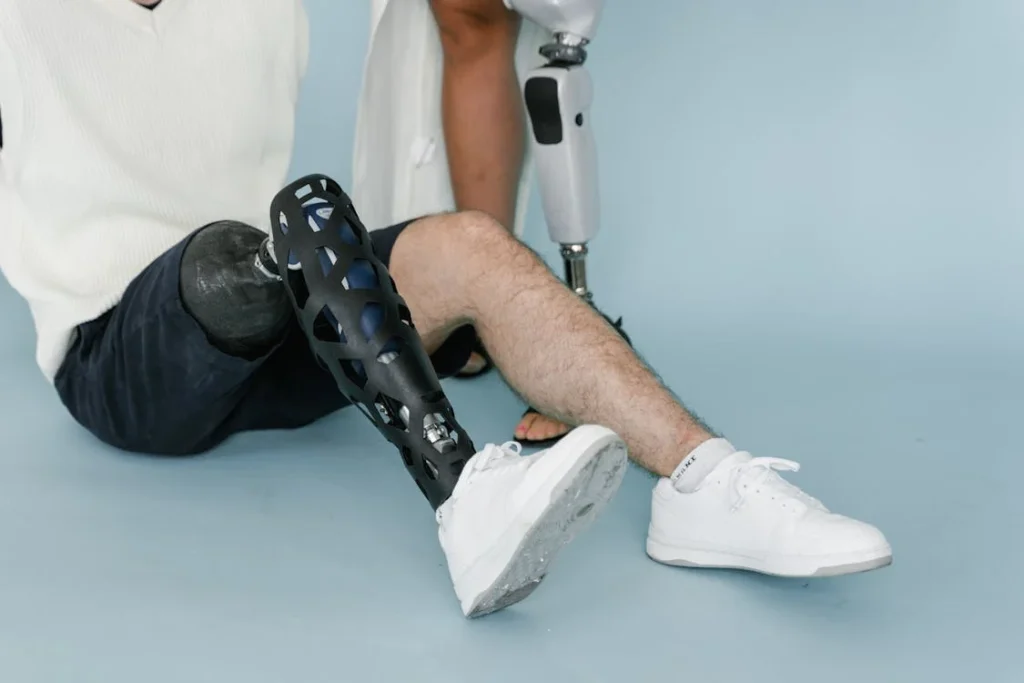
Losing a limb changes more than just movement it reshapes identity, confidence, and everyday life. Yet, thanks to medical innovation, people are finding new ways to move forward with strength and independence. Custom prosthetics have become a bridge between loss and living fully again. They blend science, design, and compassion to restore more than mobility they restore dignity.
The process behind these life-changing devices begins long before a prosthetic is fitted. It starts in the medical room, where precision plays a vital role. The use of advanced surgical instruments helps surgeons perform delicate procedures that prepare the body for prosthetic fitting. This level of care ensures that the foundation for the new limb is as strong and comfortable as possible.
The Evolution of Prosthetic Design
Modern prosthetics are not just mechanical attachments. They are carefully engineered extensions of the human body. Each device is made to match the individual’s anatomy, movement style, and lifestyle needs. From athletes to children, every prosthetic is designed to move naturally and comfortably.
Earlier designs were heavy and stiff, limiting flexibility. Today, lighter materials like carbon fiber and titanium allow smoother motion and greater endurance. With the help of computer-aided design (CAD) and 3D printing, prosthetics can now be built with exact precision, offering improved comfort and control.
This evolution reflects how deeply technology is integrated into healing. What once seemed impossible is now becoming everyday reality walking, running, and even dancing with artificial limbs that feel truly personal.
The Role of Customization in Healing
Every injury and every person’s body is different. That’s why customization is key. A custom prosthetic is not just about replacing what was lost but creating something new that supports balance, movement, and confidence.
Specialists take detailed measurements, study walking patterns, and consider skin sensitivity before designing the prosthetic. The aim is to ensure comfort and reduce the chances of irritation or pain. The result is a device that fits not only physically but emotionally helping individuals feel whole again.
Customization also extends to appearance. Many people now choose designs that reflect their personality, from realistic skin tones to bold, colorful finishes. It’s a way of taking ownership of their journey and expressing identity through design.
Technology Meets Humanity
What makes modern prosthetics truly remarkable is the combination of technology and empathy. Engineers and medical professionals work together to create designs that respond naturally to muscle movements. Some prosthetics even use sensors that connect to nerve signals, allowing users to move fingers or toes just by thinking about it.
This intersection of biology and technology marks a new era in recovery. It shows how deeply science can support emotional and physical healing when guided by compassion. Each advancement brings people one step closer to regaining independence and confidence.
Overcoming Challenges in the Journey
Adapting to a prosthetic takes patience. It’s not just a physical change but a psychological one too. Users often go through weeks or months of rehabilitation to learn how to walk or perform daily tasks again.
Physical therapy plays a crucial role during this period. Exercises focus on strengthening muscles, improving balance, and building endurance. Emotional support from therapists and peers also helps individuals overcome fear and frustration.
The process may be slow, but every milestone from taking the first step to resuming daily routines is a victory worth celebrating.
The Emotional Side of Innovation
Behind every custom prosthetic is a story of resilience. These devices symbolize more than recovery they represent hope. Many people who once thought they’d never move freely again are now leading active lives, pursuing hobbies, and inspiring others.
The emotional transformation that comes with regaining movement is powerful. It reminds us that healing is not only about the body but also about the mind. Innovation in prosthetics is proof that technology can heal the spirit as much as it heals the body.
Looking Ahead: The Future of Personalized Mobility
The future of prosthetic technology looks even more exciting. Scientists are exploring bionic limbs that provide a real sense of touch through nerve connections. Artificial intelligence is also being used to adapt prosthetics automatically to different activities, from walking to climbing stairs.
With continued research, prosthetics will become even more integrated with the human body — lighter, smarter, and more responsive. But the real beauty lies in how these innovations bring independence and confidence back to people’s lives.
A New Definition of Strength
Custom prosthetics are redefining what it means to be strong. They show that strength is not just about physical ability but about adaptability and courage. Every device tells a story of persistence — a reminder that with the right care, technology, and human willpower, recovery can lead to transformation.
From trauma to triumph, the journey of healing through design is a remarkable example of how modern science serves humanity. In every customized prosthetic, there’s not just engineering there’s empathy, purpose, and hope.







